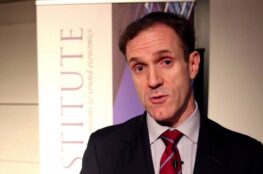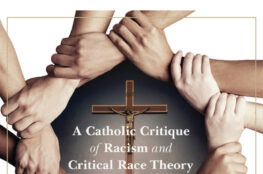In a series of articles which have appeared in The Angelus, Front Porch Republic, and The Josias, I have attempted to sketch a general outline of what John Zmirak broadly decries as “illiberal Catholicism” and what I now prefer to differentiate into two camps: “radical” and “integralist Catholics.” (Those interested in these and other “off-blog” pieces can find them linked in the “Writings” section.) After scanning through various remarks on these articles in comboxes, blogs, and social media sites, it appears that there is still some confusion about integralism generally and the project of The Josias specifically. Without wishing to drape myself in the mantle of being a spokesman for a movement to which I only contribute modestly, allow me to offer a few general clarifying remarks which may prove useful to those who have only recently come upon what I hope will be a sustained integralist turn in Catholic thought. None of these comments are intended to criticize those who may harbor some misunderstandings about what Catholic integralism is for or how it relates to other socio-political paradigms both within and beyond the Catholic tradition. I take full responsibility for any ambiguities, misstatements, or unwarranted generalizations which may have crept into my previous writings on integralism, just as I recognize that this blog entry will hardly amount to my final word on the subject.
First, the only form of integralism I am concerned with is Catholic integralism which takes its bearings from the magisterium of the Catholic Church and her deep intellectual patrimony. Other manifestations of integralism, past or present, are not my concern; and I acknowledge that at least some of them are directly hostile toward the Catholic Church. While one of the geniuses of the Catholic mind is a capacity for openness to ideas which manifest themselves outside of its usual boundaries, only a rigorous adherence to orthodoxy ensures that this openness does not turn into a pathway to corruption.
Second, integralism is not anti-liberal for the sake of being anti-liberal. It is anti-liberal because liberalism has, for centuries, waged wars of varying intensity against the tenets of the Catholic Church, right social order, and the proper understanding of the common good. As such, integralism is not necessarily aligned with the aims and intents of other anti-liberal movements, and in fact integralism must oppose any such movement which also pits itself against the Church. The so-called Islamic State, for instance, is a highly visible anti-liberal movement, but its erroneous and evil principles, coupled with its heinous persecution of Christian and other innocent populations, makes it worthy of contempt and condemnation, not pathetic praise from those afflicted with a broken moral compass. Similarly, anti-liberal movements which embrace positions proscribed by the Church, such as socialism, racism, nationalism, and neo-paganism, do not truly share a common cause with Catholic integralists.
Third, reactionarianism and integralism are not one and the same. Due to the fact that the term “reactionary” is often overplayed in both academia and popular culture, it has come to mean little more than someone who opposes the status quo. Historically speaking, however, a reactionary was someone who opposed the outbreak of revolutionary liberalism in Europe beginning in 1789 and reaching its peak during the middle portion of the 19th Century. Although contemporary integralism maintains a genetic link to that particular brand of reactionarianism, it is not a direct descendent. For instance, two of the most prominent Catholic reactionaries, Joseph de Maistre and Juan Donoso Cortes, held philosophical and theological views which, at points, are difficult to square with Catholic orthodoxy. Moreover, today’s integralism is impossible to understand independent of Thomism and Scholasticism; neither of these venerable intellectual heritages were at the heart of earlier attempts to counteract the violent imposition of liberal ideology on the West.
Fourth, integralism is not exclusivist. It recognizes close affinities with other Catholic thinkers and organizations which may not choose to identify themselves as integralists or which may even disagree with integralists on a number of salient points. At the same time, integralists know that there are Catholics who continue to remain under the horizon of liberalism who continue to make important contributions toward the preservation and restoration of an authentically Christian culture. The “point” of the new integralism is not to draw fresh battle lines against fellow Catholics but to set forth a more robust response to the dominance of liberal ideology and its control over almost all spheres of late-modern life: social, political, economic, and religious. As already noted, there is a measured openness in the Catholic mind which integralism embraces.
And last, integralism is not anti-intellectual or intentionally blind to modern realities. The return of Catholic integralism is not an automatic turning away from the intellectual, cultural, and technological developments of the past century or so of human history. While individual integralists may not agree with all of the theological, liturgical, and pastoral shifts that have occurred within the Catholic Church since the Second Vatican Council, neither do they reject them tout court. The Catholic Church is a living, breathing institution; it did not fossilize at some arbitrary “absolute moment” in time. Integralism realizes, however, that there are 1,900 years of ecclesiastical history which have to be taken into full account as well.



